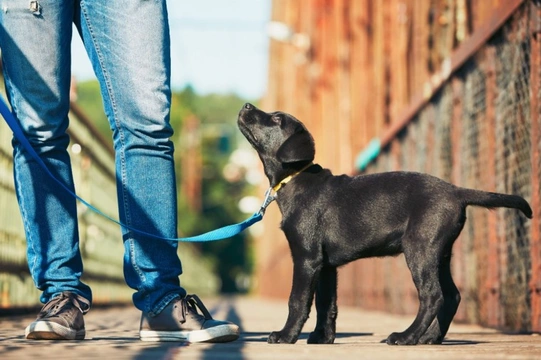
Six skills that urban dogs need to navigate their city environments
Many people who live in cities and very built-up urban environments are unable to own a dog, either because their home is too small or otherwise unsuitable, or because of the various challenges that accompany city living.
However, dogs of all breeds and types – including some very large ones – can and do live very happily in even the busiest of cities, and with appropriate training, management and introductions to the vagaries of city life, usually fit right in and thrive too.
Dogs that live in cities and urban environments face more stimulus each day than dogs in rural areas, and they need to learn a range of skills to ensure that they stay safe and happy, and don’t pose a danger or problem to other people too.
Often, dogs that live in cities intuitively develop the skills they need to suit their lifestyle over time, but if you’re trying to train a puppy for city living or are wondering if your existing adult dog would get on ok with urban life, knowing what sort of skills and traits city dogs need to possess is useful.
In this article we will share six skills that urban dogs need to live successfully in an urban centre, and why these skills are so useful. Read on to learn more.
Self-control and scavenging
Dogs of all types and that live in all manner of environments are often adept at scavenging, and finding thrown away or discarded food when out on walks. However, food and other things that your dog considers to be edible are often more likely to be found discarded on city streets than in rural areas, and for many city-dwelling dog owners, few walks take place without having to steer the dog away from discarded trash.
A dog that is trained and conditioned not to scavenge or pick up food that they find on the streets has a head start on city living, and so this is a valuable skill to work on.
Being in close quarters with others
Personal space is often hard to come by on busy city streets and in areas where people congregate in large numbers like train stations, and people who live in cities soon become used to spending time in close proximity to others. The same is true for dogs, and within the city, your dog will commonly be in close quarters with other people and potentially dogs, often in restricted spaces like pavements.
This means that a good city dog needs to be comfortable with being in close proximity with strangers, and take this in their stride without becoming anxious or reactive.
Handling noise and commotion
Cities tend to be noisy environments in general, with a continual backdrop of general noise and the usual factors like traffic and everything else to take into account too. A dog that is very reactive to loud or strange noises or a lot of noise and commotion nearby will find city life daunting, and so the best city dogs are those that aren’t easily phased by background noise, loud noises, or sudden and unusual sounds.
Accepting contact from strangers
It is both a bad idea and bad manners to pet someone else’s dog without first asking their owner if this is ok and if the dog is friendly, and in a perfect world, children would be taught this from a young age, and adults would follow this rule reliably.
However, we all know that this isn’t the case in reality, and if you are walking your dog in a busy area where close proximity to other people is unavoidable, the chances are that people are going to try and pet your dog without asking, and not all of them will make a good approach.
A good city dog needs to be at least tolerant and accepting of being touched by strangers, even if they would rather be left alone – and managing a dog that is defensive or snappy can be a huge challenge, and may mean that you need to muzzle your dog and work hard to improve their socialisation skills.
Reliably following commands
To be able to navigate a busy urban environment with lots of people and stimulus around safely, your dog needs to be actively listening for your commands and direction, and able to follow them reliably.
This can be a challenge, as even very well behaved dogs can become diverted by a lot of surrounding stimulus, but walking your dog in a city requires a switched-on, forward thinking approach to pre-empt problems, and a dog that is responsive and willing to listen and do as asked even when there is a lot going on around them.
Walking appropriately near to roads
All dogs need to be trained to walk nicely on the lead, keep up the appropriate pace, and not pull or wander around unduly.
In cities where pavements are often busy and crowded and traffic is zooming past on the road immediately next to them, excellent manners on the lead and reliable, consistent behaviour is essential.
If your dog is hard to control on the lead or has a tendency to wander back and forth in front of you or stray out not the road if their lead is too long, you need to work to improve their skills for city living, to ensure that they remain safe and appropriately controlled.



